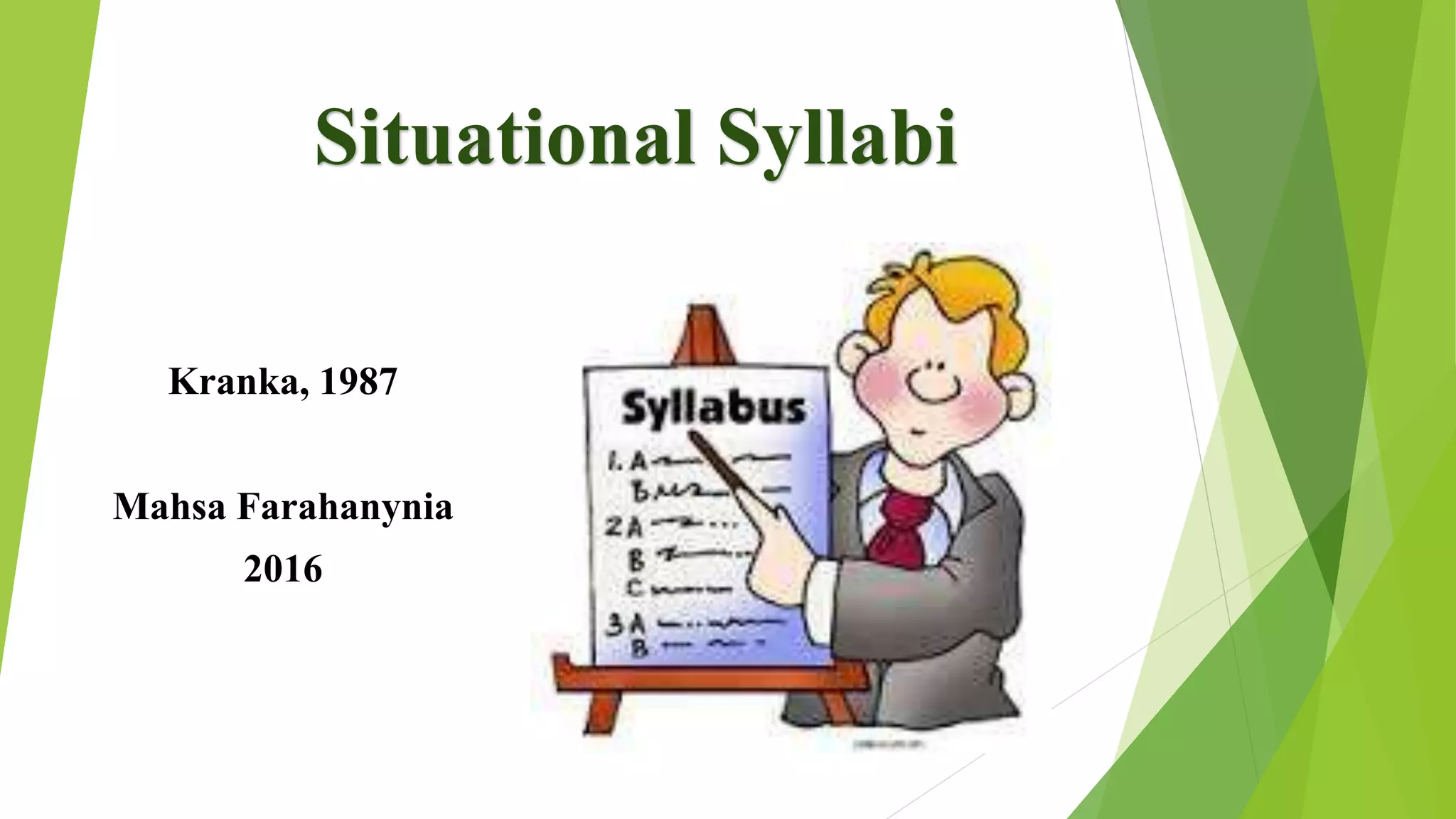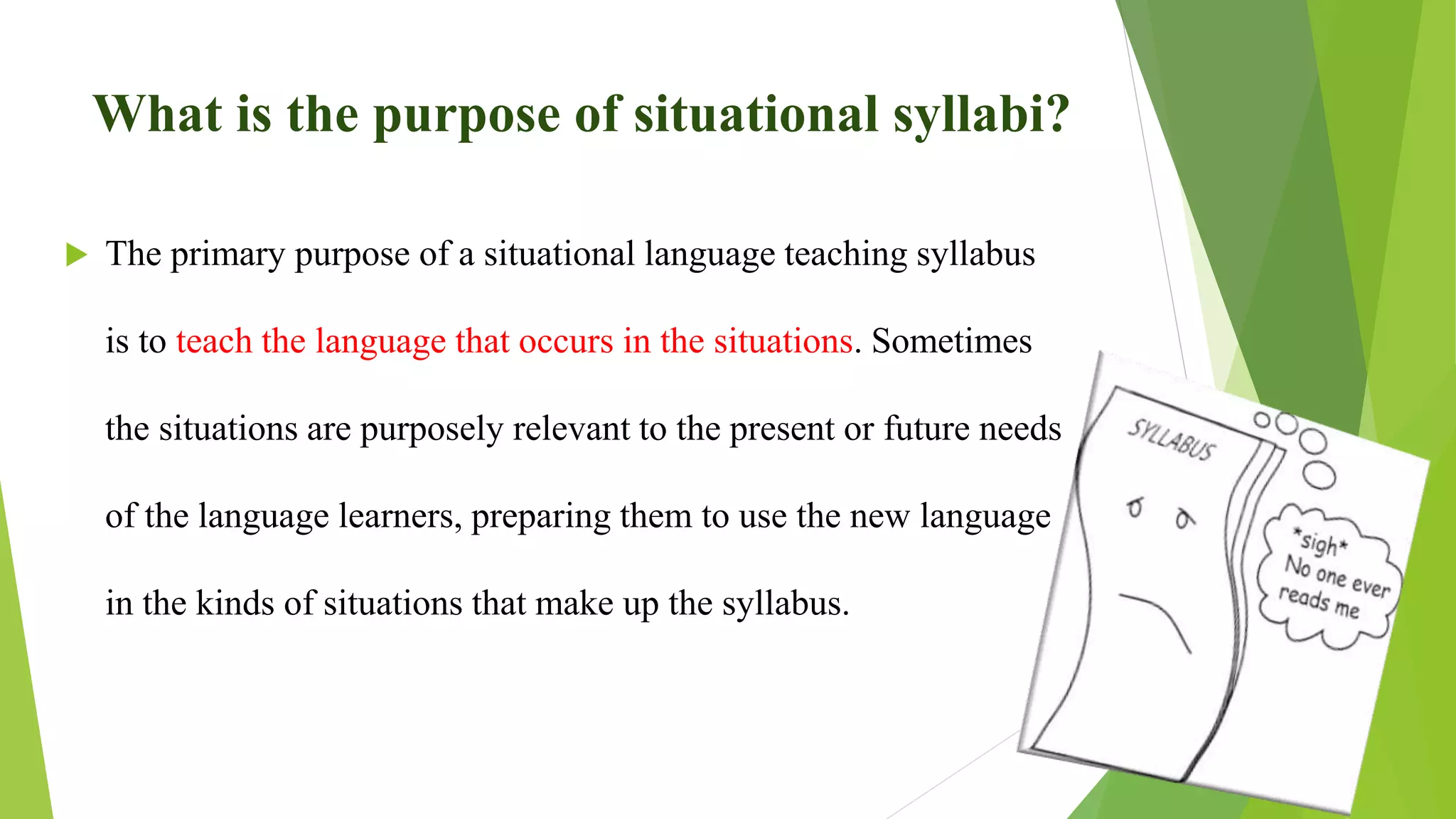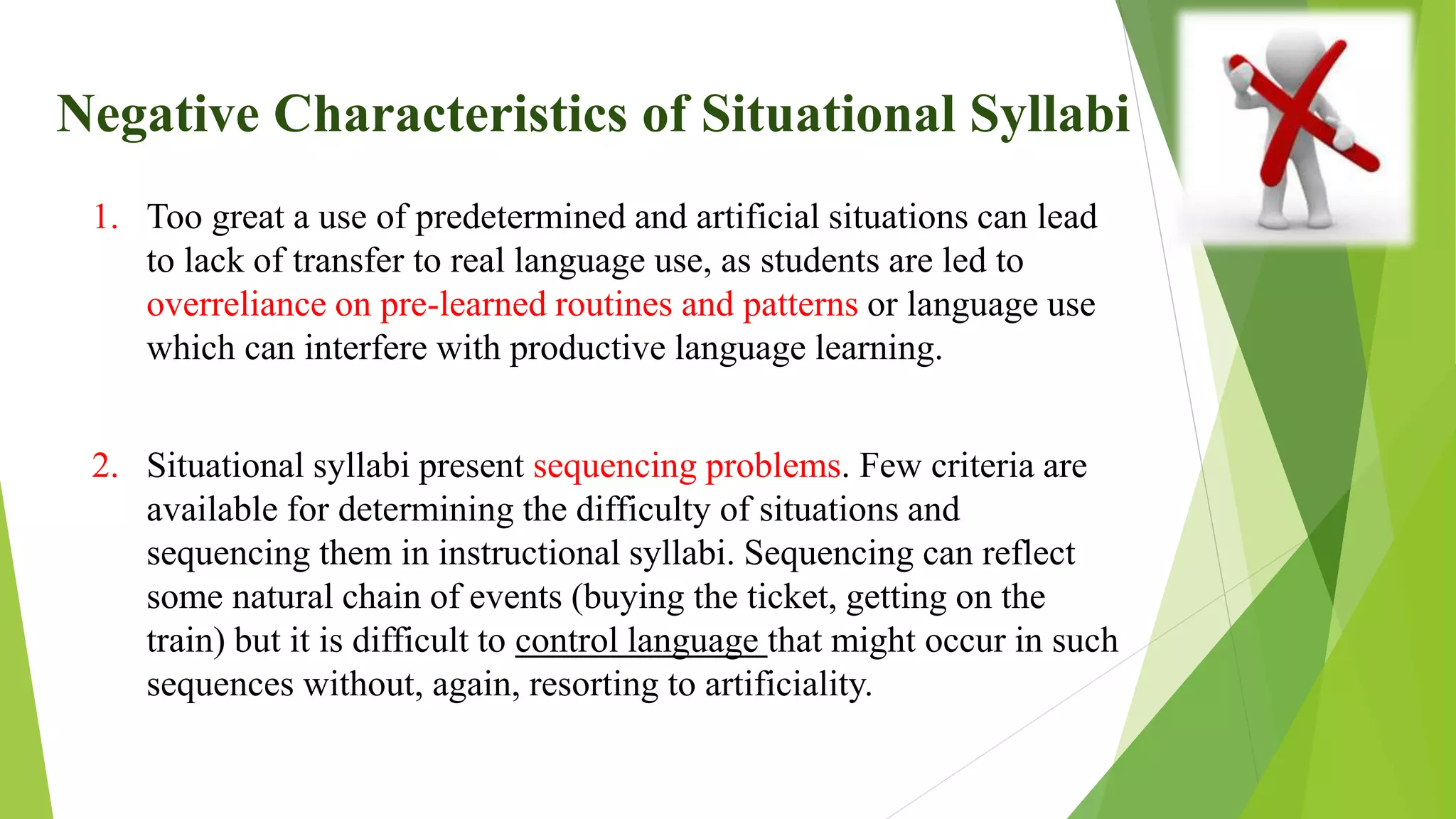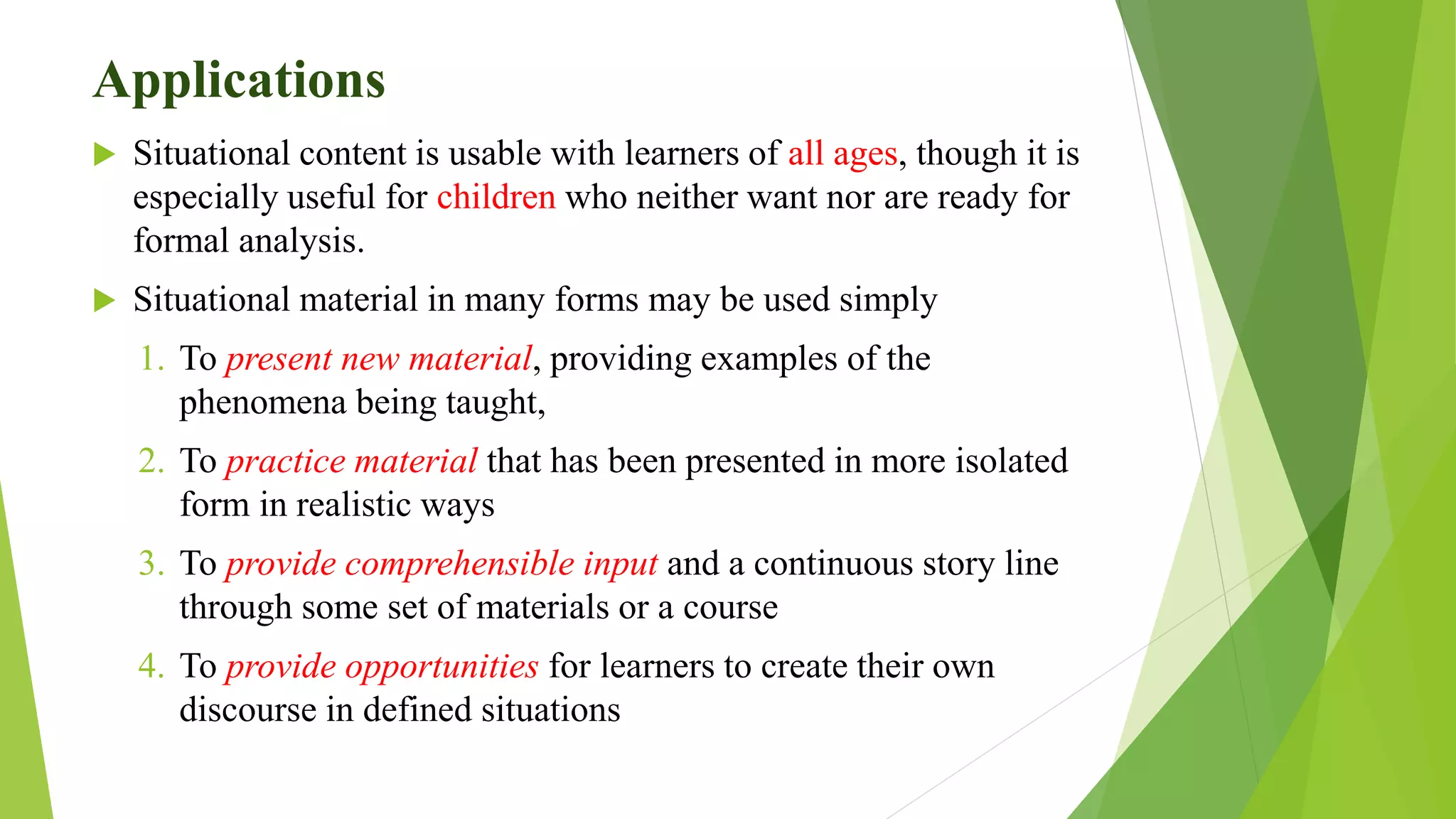A situational syllabus teaches language through real or imaginary situations involving participants engaged in an activity in a specific setting. The purpose is to teach language relevant to learners' present or future needs. Situations can be classified based on information type, linguistic focus, static/dynamic nature, or type. While situations provide context for form and meaning, overreliance on predetermined situations can hinder transfer to real language use. Situational syllabi are best used to supplement other methods by presenting new material or practicing in realistic ways.















